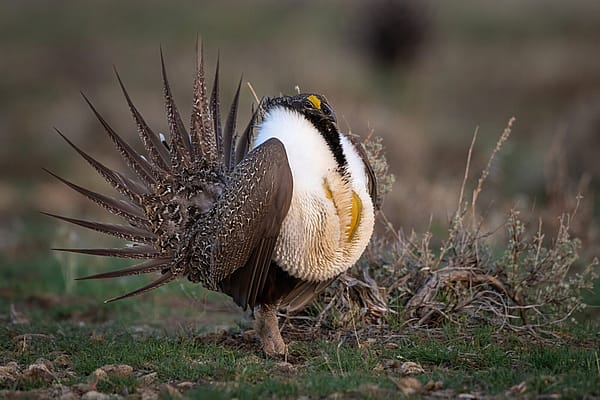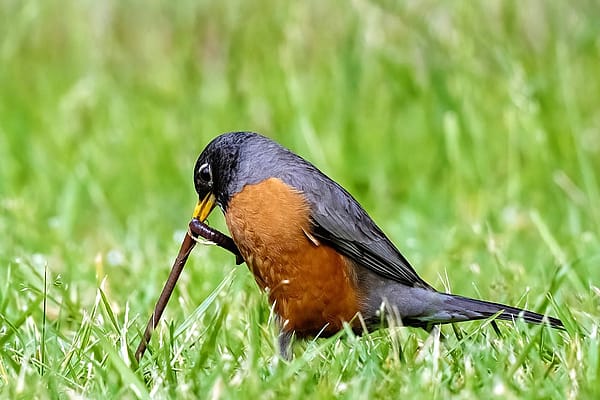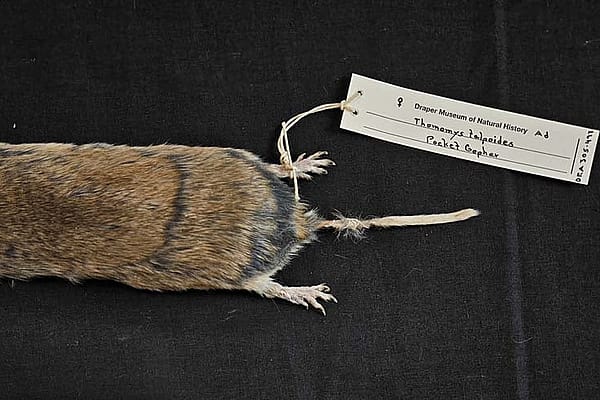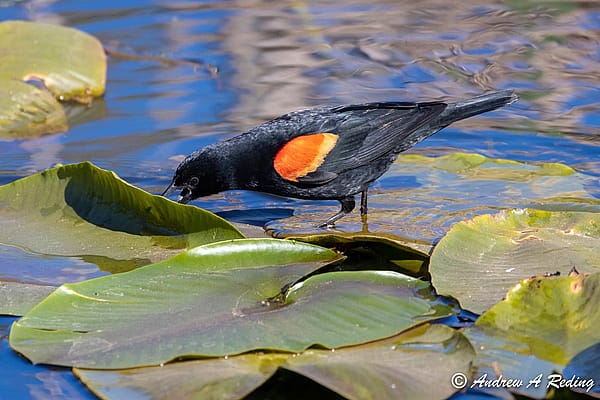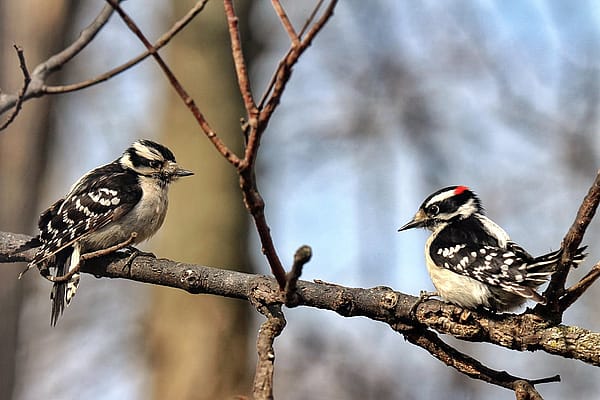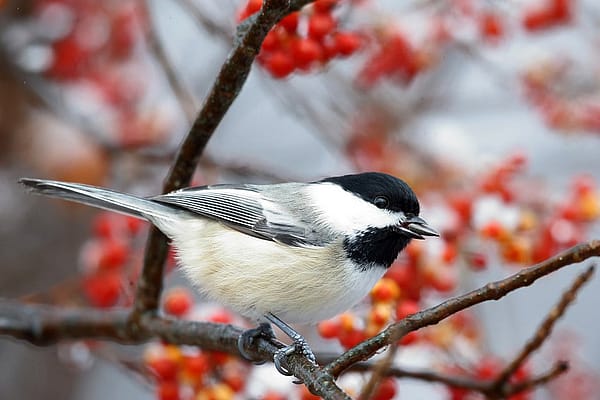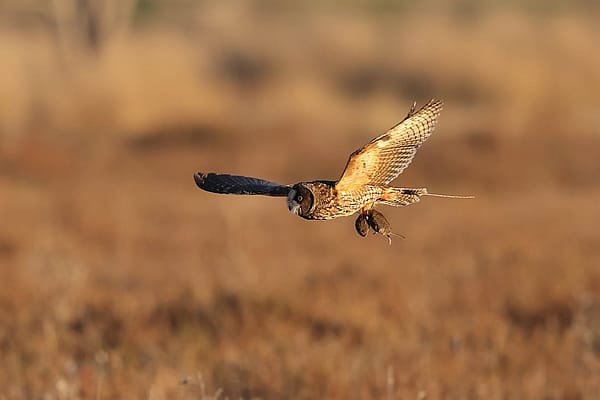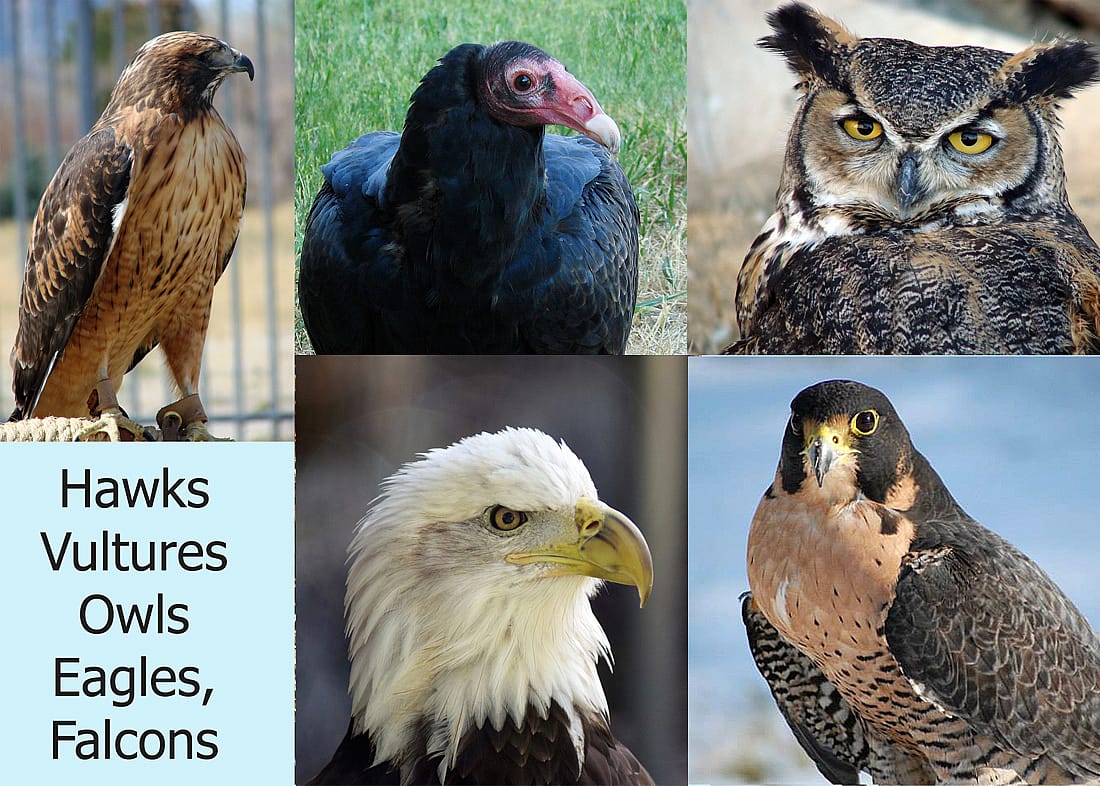
Raptors Aren’t Always What You Expect

Don’t believe my titles, I might be lying.
Most people are familiar with at least a few raptors. Some of you know a lot, while others know very little. Nevertheless for many of us there are some common beliefs that may surprise you as being false. In this blog I will cover 9 common beliefs that may not be the truths we think they are. So beware of my title headings – they are not to be trusted. Subsequently, you may be surprised by at least some of these facts.
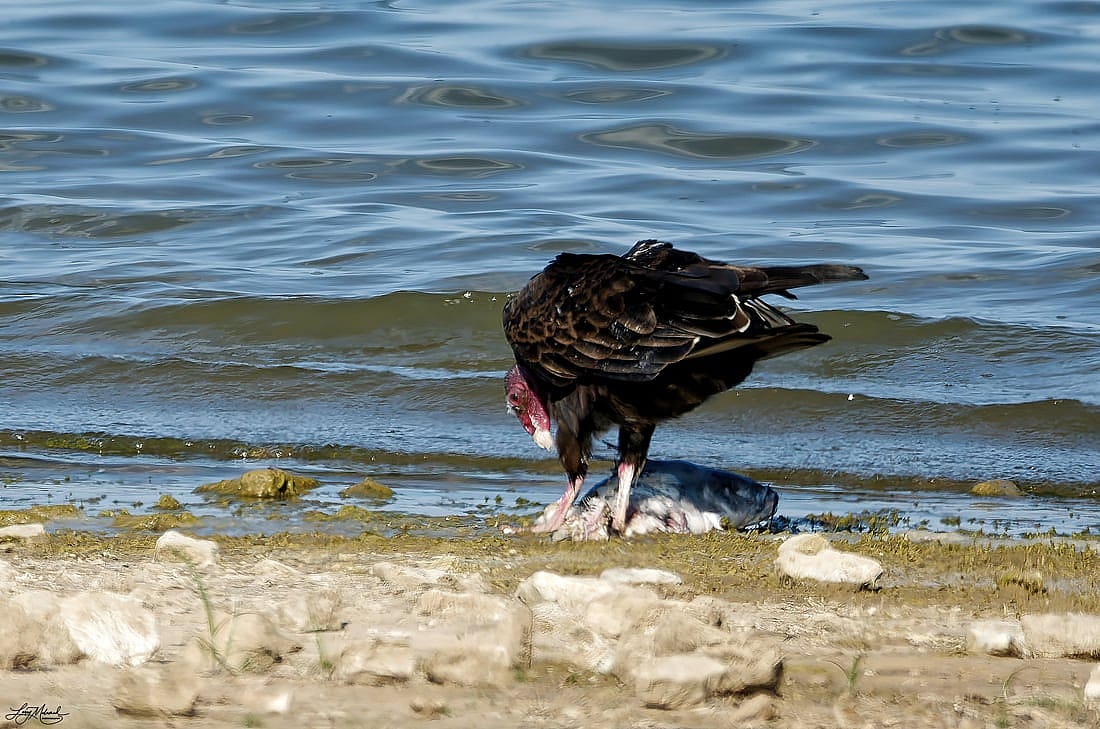
All vultures dine mainly on dead animals – Or do they?
It is a common belief that vultures feed mainly on carrion. In other words, they eat dead animals. This belief is basically true. However, it is not entirely true. Did you know there is a vulture that resides in Africa whose favorite food is fruit?
Named the Palm-nut Vulture, 58% to 65% of the adult’s diet consists of the fruit from oil palms. Furthermore, fruit makes up 92% of the juvenile’s diet. This vulture typically hangs upside down, while holding the fruit in one of its feet as it feeds. In addition, Palm-nut Vultures also feed on dates and other fruit. The remainder of its diet consists of fish, crabs and invertebrates, as well as small mammals, birds, and reptiles, which it hunts or occasionally takes as carrion.
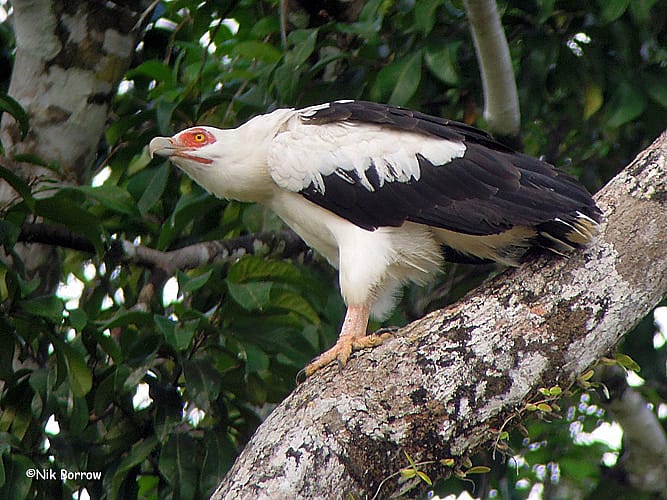
The Largest Birds are Eagles. Is this true?
Eagles can be very large. The Steller’s Sea Eagle may weigh 13-20 lbs. and is arguably the largest eagle in the world.
Nevertheless, eagles are not the largest birds in the world. According to the book, How fast can a Falcon Dive? by Peter Capainolo and Carl A. Butler, the largest bird in the Western Hemisphere is the Andean Condor which can weight over 30 lbs and have a wingspan of about 10 feet. The largest in Eurasia, the Cinereous Vulture (also know as the Eurasian Black Vulture) is almost as large as the Andean Condor.
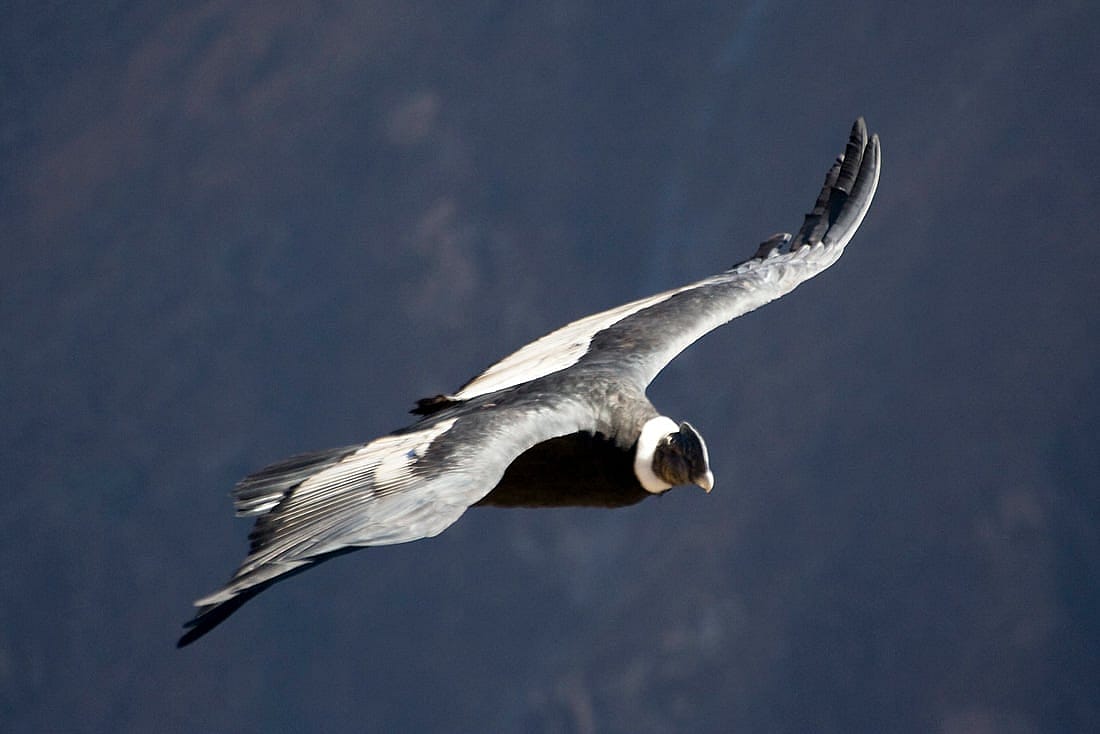
Eagles Are Always Large – Or are they?
In the Americas, eagle species are large (both Bald and Golden Eagles weigh an average of 8 to 13 lbs). As a result, I used to generalize that size was a defining factor. However, it turns out there are also small eagles. For example, the Little Eagle of Australia only weights 1.8 lbs and measures 17–21.7 inches in length. Furthermore, the South Nicobar Serpent Eagle weighs only around .99lbs and is only 16 inches in length.
If you would like to learn more information on this topic visit my blog, Eagle Size, Taxonomy, and Exceptions at: https://centerofthewest.org/2020/07/14/eagle-size-taxonomy-and-exceptions/
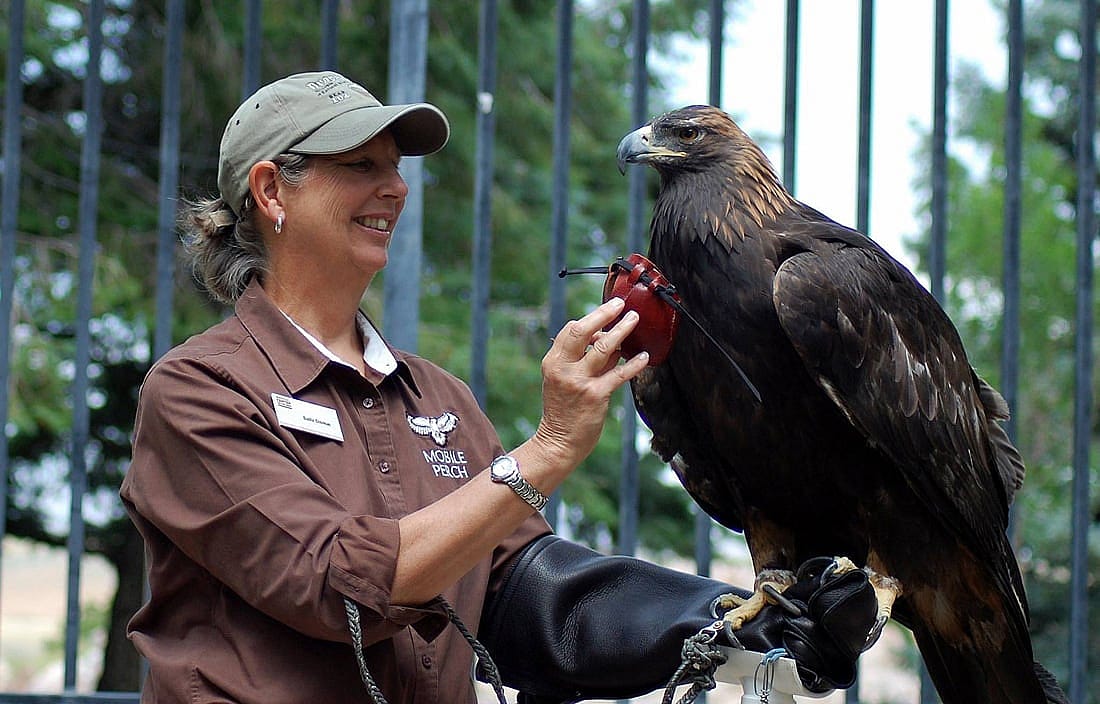
The surprise is in the beak.
Did you know there is a raptor that specializes almost entirely on eating freshwater apple snails? This would be a rather difficult feat if it had the typical raptor beak. But never fear, this particular raptor has evolved with a beak that is highly specialized – it fits perfectly inside snail shells. Meet the Snail Kite. This bird hunts by flying low over marshy or open water areas, dropping down to grab up snails with their talons. Thereupon, with the use of its long curved bill it is able to pull out the delicate snail from inside the shell.
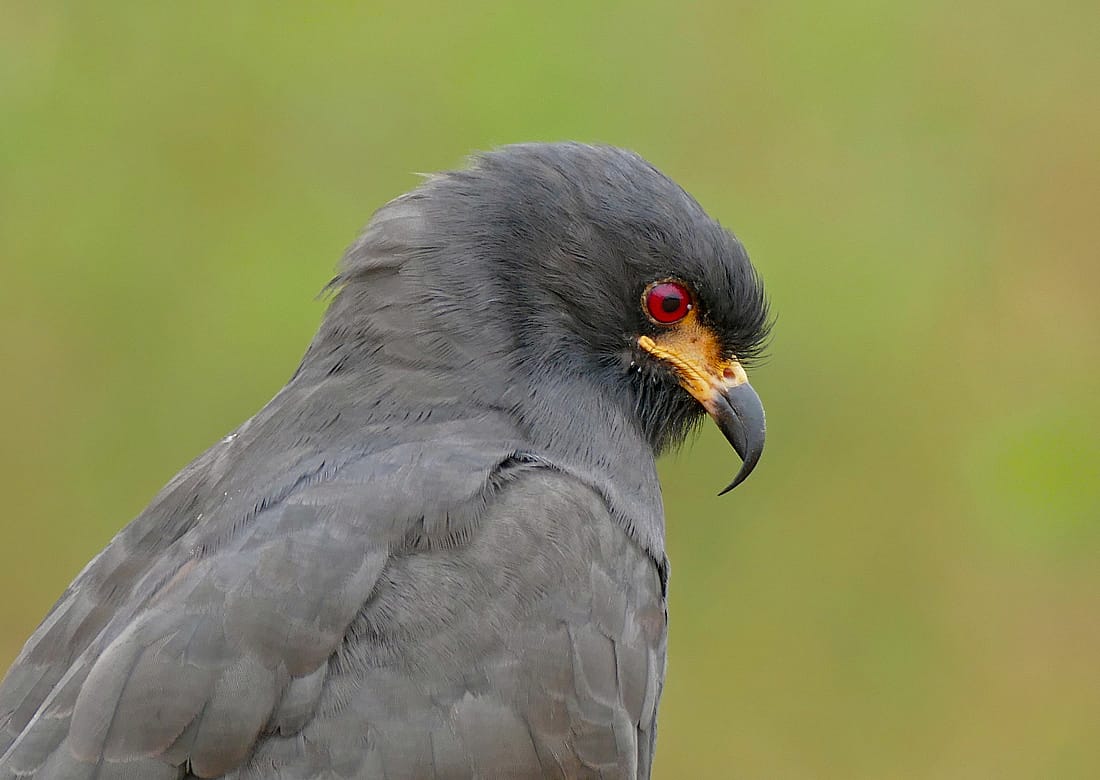
If I see a bird with long legs, I know it isn’t a raptor.
Or maybe it is. Let me introduce you to the Secretary Bird. In fact, I didn’t know it was a raptor until I read an article on Secretary Birds back in 2012 after seeing one at the San Diego Zoo. At first glance this bird does not look like a typical raptor. This is due to its long legs. But take another look. This bird has a sharp curved upper bill as raptors do. It also has strong looking feet.
With these long legs, coupled with strong feet, these unusual raptors may walk over 20 miles a day. Additionally, their long legs come in handy for kicking venomous snakes and other prey. The Secretary Bird can prey on some of the world’s deadliest snakes such as cobra, mamba, and puff adders.
With a kick five times their own body weight, Secretary Birds can knock out prey with one kick. Following this they will stomp on the prey until it is dead.
Furthermore, the Secretary Bird will stomp on the ground to flush prey from bushes or other thick vegetation.
For additional information about this interesting bird listen to this short 1:42 podcast which includes their un-bird like sounds. https://www.birdnote.org/listen/shows/secretarybird-eagle-stilts
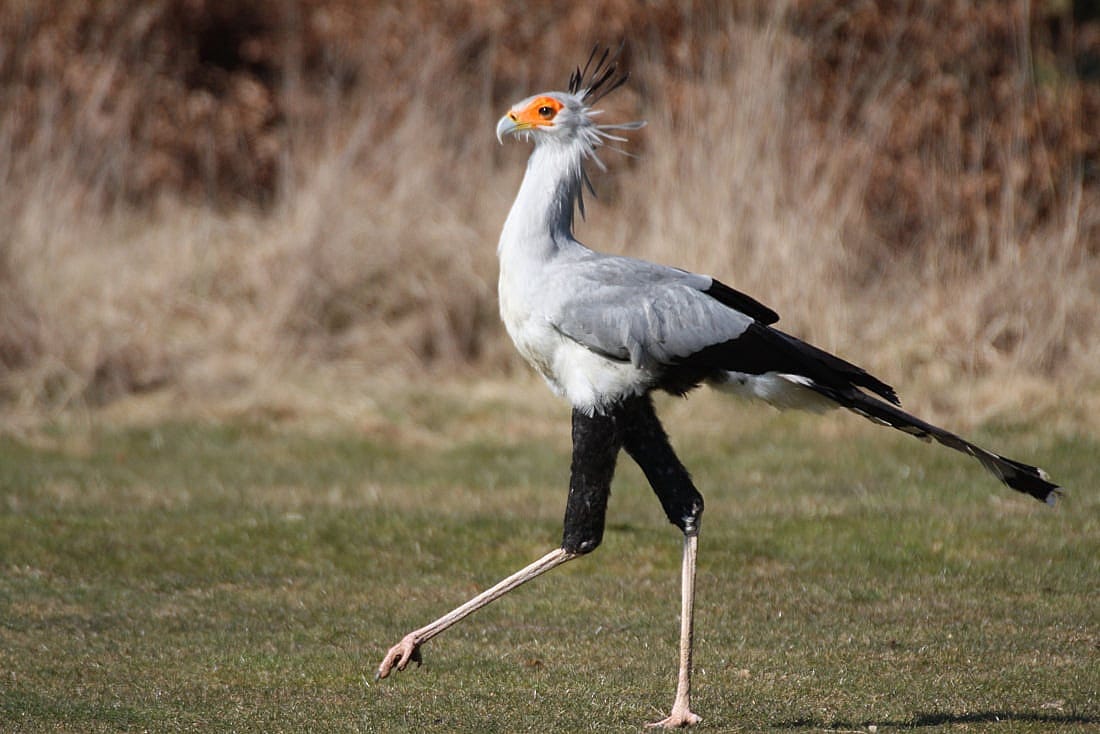
Raptors have four toes, usually with three facing forward and one facing backward.
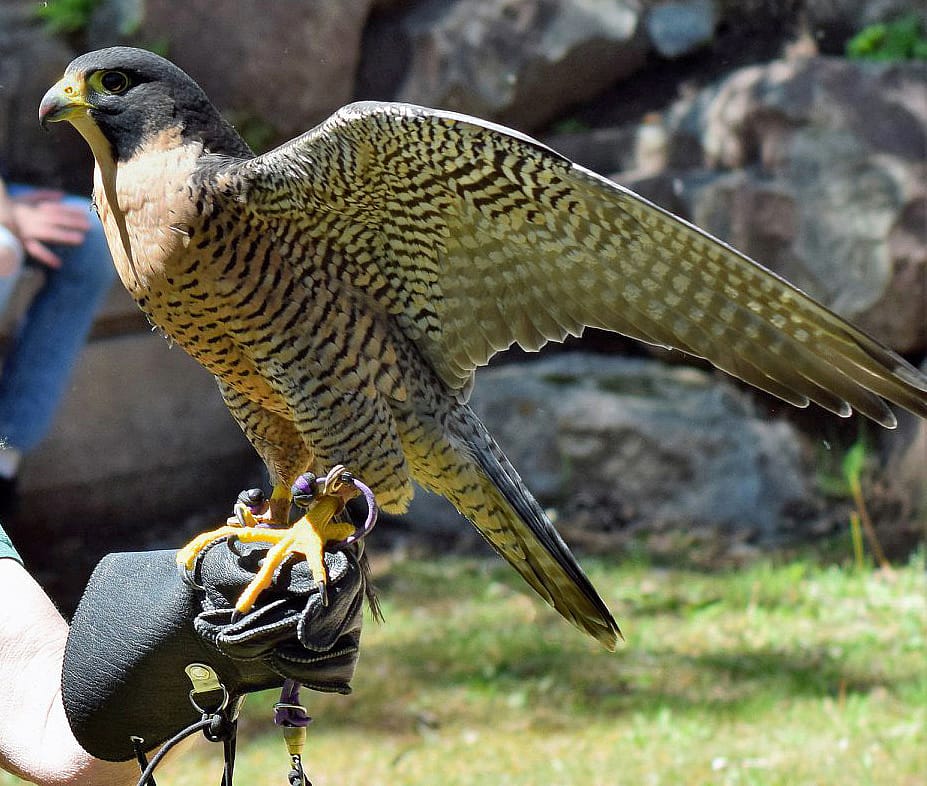
For the most part, birds have three toes that face forward and one that faces backward. Raptors such as hawks, falcons, eagles, and vulture all have this arrangement.
The second most common toe arrangement which can be seen on woodpeckers, most parrots, as well as other birds is the position of two toes forward and two back. This arrangement is called zygodactyl. Having three toes forward and one toe backward is called anisodactyl.
Unlike other raptors, however, owls and osprey have an outer toe which they can turn either forward or backward depending on their need. Although this outer toe does not turn straight backwards, it noticeably rotates to a back and somewhat side position.

Eagles have majestic calls. Don’t you agree?
The first time I heard a bald eagle calling out from a tall pine tree, I looked around for a different bird. After all, I knew an eagle had a loud drawn out scream. Certainly I had heard enough of them in movies and TV shows to know. But no, this was a rather wimpy trill like sound. Nevertheless, the call I heard was coming from the eagle. It turns out the majestic scream I am so familiar with is actually a voice over from a Red-tailed Hawk.
Someone at one time decided that the true eagle call just wasn’t grand enough for an eagle. As a result, the voice of a Red-tailed Hawk is the call you almost exclusively hear when you see an eagle or hawk in a film. Recently, I even heard a Red-tailed Hawk call played as a Turkey Vulture flew by. This is even funnier as Turkey Vultures don’t have a voice box, so can’t call out.
Listen to bald eagle sounds here: https://search.macaulaylibrary.org/catalog?taxonCode=baleag&mediaType=a&sort=rating_rank_desc&q=Bald%20Eagle%20-%20Haliaeetus%20leucocephalus
Liisten to Golden Eagle Sounds here: https://search.macaulaylibrary.org/catalog?taxonCode=goleag&mediaType=a&sort=rating_rank_desc&q=Golden%20Eagle%20-%20Aquila%20chrysaetos
Hear the sounds of the Red-tailed Hawk here: https://search.macaulaylibrary.org/catalog?taxonCode=rethaw&mediaType=a&sort=rating_rank_desc&q=Red-tailed%20Hawk%20-%20Buteo%20jamaicensis
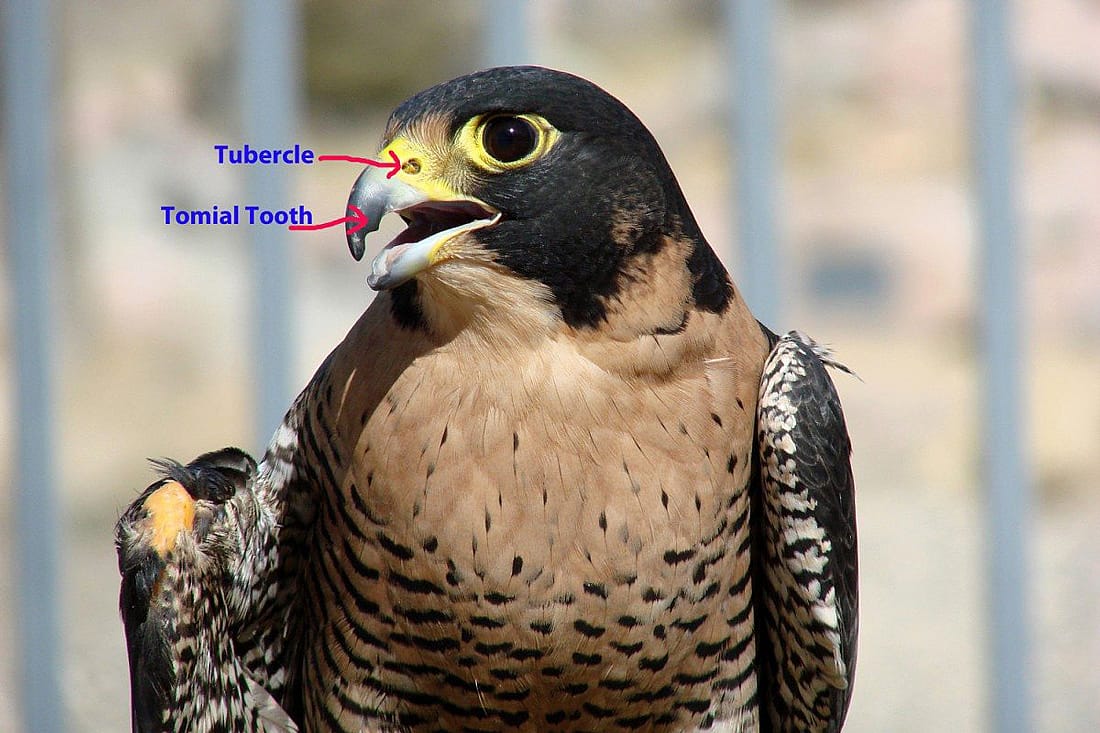
Falcons are closely related to parrots. True of false?
If you said yes, you know a lot about raptors, due to the fact that my heading for this section is true. It was a surprise to me when scientists made the discovery that falcons are more closely related to parrots than to hawks and eagles.
This seems to be difficult to understand, since we know falcons are considered a raptor and they look so similar to hawks and eagles. In fact, they are so similar that scientists first grouped them together in the bird taxonomy list. However, in spite of these similarities, scientists have discovered that these birds do not share a family history.
Due to a number of complete DNA analysis, we now know the evolutionary history of falcons places them with a shared ancestry to parrots. Therefore, it is believed that the predatory lifestyle of theses raptors caused what is now understood to be two unrelated groups of birds evolving with a similar lifestyle and similar physical appearance. This is called “convergent evolution.”
Listen to this short 1:45 minute BirdNote Falcons, Parrots, The Tree of Life https://www.birdnote.org/listen/shows/falcons-parrots-tree-life
Physically, parrots and falcons share two common features. A tomial tooth and a tubercle within the nostrils. The tomial tooth is a sharp point in the upper beak with a grove for the “tooth” in the lower. Falcons can snap the vertebrae of prey with this, while parrots can crack seeds with theirs.
Notice the tomial tooth in the photo of Hayabusa above, as well as on the beak of the parrot in the photo below.
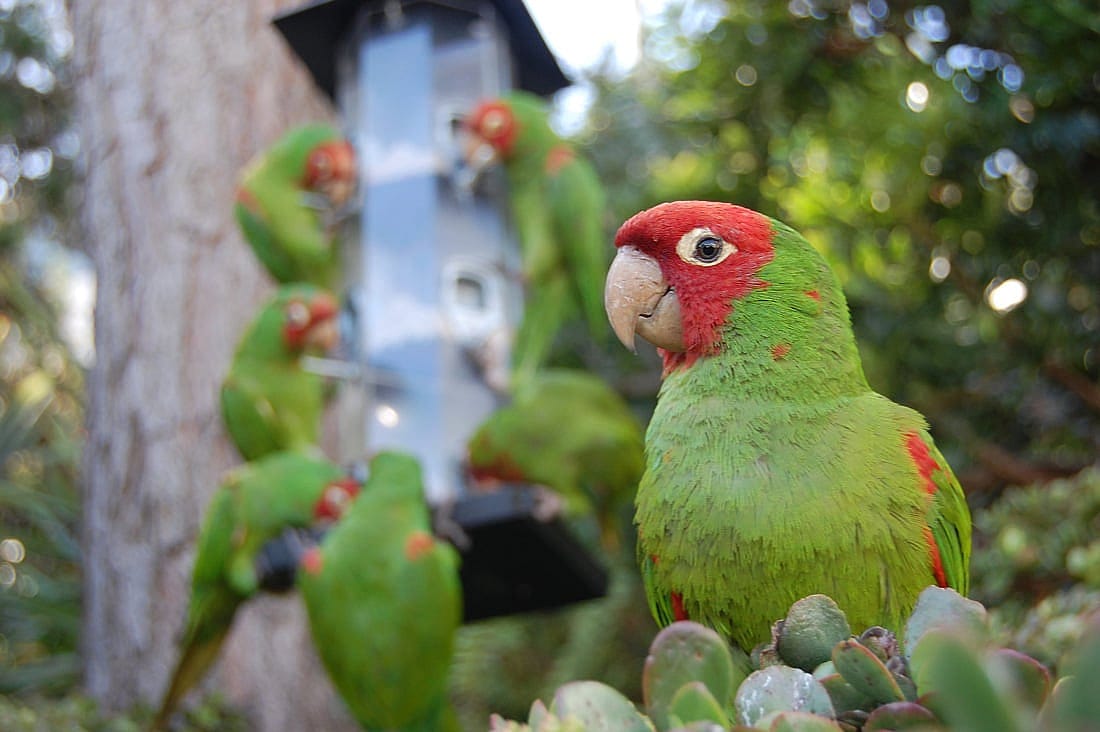
In Conclusion
There are many surprises in the natural world. Some are due to our own false interpretations and conclusions, others are due to misinformation we have been given as well as information that at one time was considered true but has been disproven. Science is forever evolving. As we become more technologically advanced, scientists have more tools to work with. With these new abilities we continue to evolve in our knowledge of our world as well as the universe around us.
A Further Note
Sadly, the Andean Condors and the Secretary Birds mentioned in this blog are considered endangered. The Cinereous Vulture and Nicobar Serpent Eagle are listed as near threatened, and the Steller’s Sea-eagle is listed as vulnerable. Their status can be found on the International Union for Conservation of Nature’s Red List of Threatened Species. This Red List https://www.iucnredlist.org/ has become the world’s most comprehensive information source on the global extinction risk status of animal, fungus and plant species.
Photos
Five Birds of the Draper Museum Raptor Experience collection put together by Author. Red-tailed Hawk, Turkey Vultures, and Great Horned Owl by Author. Peregrine Falcon and Bald Eagle from Draper Museum Raptor Experience. https://www.facebook.com/drapernaturalhistorymuseum
Turkey feeding on a dead fish by Larry Melamed, Attribution-NonCommercial 2.0 Generic license, https://www.flickr.com/photos/larrymelamed/
Palm-nut Vulture by Nik Borrow, Attribution-NonCommercial 2.0 Generic License, https://www.flickr.com/photos/nikborrow/
Andean Vulture in flight by Aaron Kor, Attribution-NonCommercial-NoDerivs 2.0 Generic license, https://www.flickr.com/photos/aaronkor/
Kateri with her handler, Haybusa on my glove, and Teasdale’s feet are photos belonging to the Draper Museum Raptor Experience, https://centerofthewest.org/explore/greater-yellowstone-natural-history/raptor-experience/
Snail Kite by Bernard DUPONT, Attribution-ShareAlike 2.0 Generic license, https://www.flickr.com/photos/berniedup/
Secretary Bird by Mark Kent, Attribution-ShareAlike 2.0 Generic License, https://www.flickr.com/photos/flamesworddragon/
Jade, the Draper Museum Raptor Experence’s bald eagle was downloaded from a previous, now inactive, DMRE Facebook page.
Hayabusa with tomial tooth and tubercule labeled, photo by author https://www.flickr.com/photos/157982666@N07/
Wild Parrots from San Francisco’s Telegraph Hill by Patrick Byuechner, Attribution-NonCommercial 2.0 Generic License, https://www.flickr.com/photos/buechners/
Written By
Anne Hay
Anne Hay has a Bachelor's degree in Elementary Education and a Master's in Computers in Education. She spent most of her working years teaching third grade at Livingston School in Cody, Wyoming. After retiring she began doing a variety of volunteer work for the Buffalo Bill Center of the West’s Draper Natural History Museum. Anne loves nature and has a concern for the environment. She believes that educating the public, so that they will have a better understanding and appreciation for the natural world, is very important. Because of this belief, volunteering at the Center is a perfect fit. She spends time in the Draper Lab, observing eagle nests for Dr. Charles Preston’s long-term research project on nesting golden eagles, writing observation reports of raptor sightings in the Bighorn Basin, and working with the Draper Museum Raptor Experience. Anne states that, “Having a bird on my glove, is one of my all time favorite things in life.”
